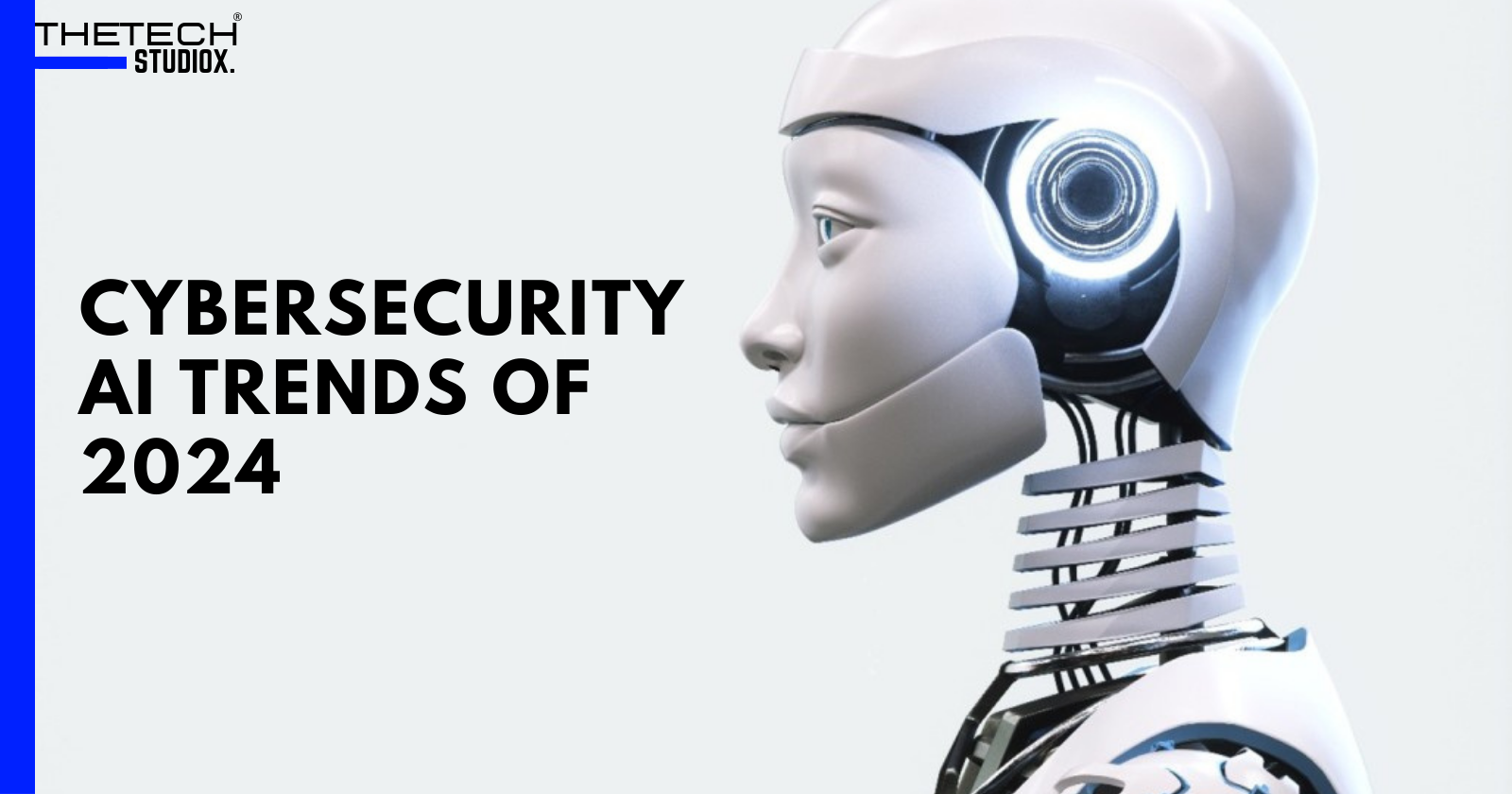Table of Contents
Cybersecurity AI Trends of 2024
In the ever-evolving landscape of cybersecurity, artificial intelligence (AI) is a game-changer. Its role extends from fortifying defense mechanisms to actively countering cyber threats. As we step into 2024, let’s explore the pivotal AI trends shaping the cybersecurity landscape.
Importance of Staying Updated on Trends
Staying informed about AI trends is not just a choice; it’s a necessity. With 80% of executives integrating AI into their strategies, being updated ensures you remain at the forefront of technological innovation. This article delves into the crucial trends that demand attention in 2024.
AI-Powered Threat Detection and Response
Advanced Algorithms and Real-time Response
In 2024, AI will employ cutting-edge algorithms for in-depth digital landscape exploration. It offers real-time responses, instantly identifying and neutralizing threats, minimizing the window for potential exploitation.
Behavioral Analytics and Anomaly Detection
AI goes beyond recognizing known threats; it learns normal user behavior. Through behavioral analytics, it spots deviations, acting swiftly with anomaly detection. This proactive approach ensures robust cybersecurity, predicting and preventing incidents.
Zero-Trust Architecture
Zero-trust architecture, fortified by AI, is set to evolve in 2024. Embracing “trust no one, verify everything” principles, it adapts access controls based on evolving risks, identifying unusual patterns with AI-driven anomaly detection.
AI in Data Backups and Recovery
Integrating AI into data backups becomes standard in 2024. Illustrated by the Kyoto University case, generative AI tools reshape disaster recovery, ensuring efficiency, reliability, and swift recovery procedures.
Rise of Adversarial AI
As organizations bolster cybersecurity with AI, adversarial AI emerges as a threat vector. Solid model training and continuous monitoring are essential to counter this, emphasizing the need for collaboration within the cybersecurity community.
Human Augmentation for Security Operations

The collaboration between AI and human expertise takes center stage in 2024. AI-driven tools empower cybersecurity professionals, creating a balanced, adaptive workforce that efficiently tackles cyber threats.
Ensuring Secure Data Practices
Privacy-preserving AI techniques play a pivotal role in 2024, addressing the challenges of third-party involvement and cyberattacks on IoT systems. Advanced technologies, regulatory alignment, and a delicate balance between security and privacy underscore this transformative approach.
Regulatory Compliance and Explainability
Understanding Regulatory Compliance:
In the context of AI, regulatory compliance refers to the adherence of AI-driven systems and processes to established laws, regulations, and guidelines. Various sectors, including finance, healthcare, and technology, have specific regulatory frameworks governing the ethical and responsible use of AI. Compliance ensures that organizations operate within legal boundaries, addressing concerns related to data privacy, security, and fairness in AI algorithms.
For instance, the General Data Protection Regulation (GDPR) imposes strict rules on the processing of personal data, necessitating organizations to implement AI systems that respect individuals’ privacy rights. Achieving regulatory compliance requires a comprehensive understanding of the legal landscape, ongoing monitoring of changes, and the implementation of robust mechanisms to align AI practices with evolving regulations.
Significance of Explainability:
Explainability in AI refers to the ability to understand and interpret the decisions made by AI algorithms. As AI systems become more complex, the need for transparency in their decision-making processes becomes paramount. Explainable AI (XAI) ensures that the outcomes generated by AI models are comprehensible to both experts and non-experts, fostering trust and accountability.
In the context of regulatory compliance, explainability serves as a crucial tool for organizations to demonstrate the fairness and non-discriminatory nature of their AI applications. Regulatory bodies often require organizations to provide insights into how AI decisions are made, especially when these decisions impact individuals or influence significant outcomes.
Meeting Compliance through Explainable AI:
Explainable AI models are designed to provide clear, understandable insights into the factors influencing AI decisions. This transparency not only aligns with regulatory requirements but also empowers organizations to identify and rectify potential biases in their AI algorithms. By adopting explainability, organizations can showcase the ethical considerations and safeguards embedded in their AI systems.
In scenarios where audits or investigations are conducted to assess regulatory compliance, explainable AI becomes a valuable asset. It allows organizations to trace and articulate the decision-making process of AI models, providing evidence of responsible and ethical AI implementation.
The Path Forward:
As AI continues to evolve, the intersection of regulatory compliance and explainability will remain a focal point. Organizations must proactively incorporate explainable AI practices into their AI development lifecycle to ensure alignment with regulatory frameworks. This commitment not only safeguards against legal repercussions but also contributes to the development of a responsible and trustworthy AI ecosystem that benefits both businesses and individuals alike.
AI-Powered Cybersecurity Workforce Training
By 2030, 30% of tasks will be automated using AI. The cybersecurity workforce undergoes a paradigm shift with realistic training scenarios, adaptive learning modules, and an accelerated learning curve, aligning with AI to prepare for emerging challenges.
Conclusion
Prepare for These Cybersecurity AI Trends in 2024 Cybersecurity‘s future hinges on how well AI adapts, learns, and collaborates with human experts. Staying alert to these trends will shape a safer digital future amidst emerging cyber threats.
FAQs
Q: How does AI contribute to real-time threat response in 2024?
A: AI utilizes advanced algorithms for instant threat identification, minimizing vulnerability windows.
Q: What role does zero-trust architecture play in cybersecurity with AI in 2024?
A: Zero-trust architecture, fortified by AI, adapts access controls based on evolving risks, enhancing security.
Q: How does AI reshape data backups and recovery processes in organizations?
A: AI integration ensures efficient data backups, swift recovery, and resilience against potential loss or corruption.
Q: What challenges does adversarial AI pose to organizations adopting AI in cybersecurity?
A: Adversarial AI, designed to deceive other AI systems, requires strategic investments and collaborative defense strategies.
Q: How does AI-powered cybersecurity workforce training prepare professionals for the future?
A: AI-driven training provides realistic scenarios, adaptive learning, and an accelerated curve, ensuring readiness for evolving cyber threats.





[…] the rapidly evolving landscape of cybersecurity, the concept of zero-trust security has gained significant traction. With the growing reliance on […]
Can you be more specific about the content of your article? After reading it, I still have some doubts. Hope you can help me.